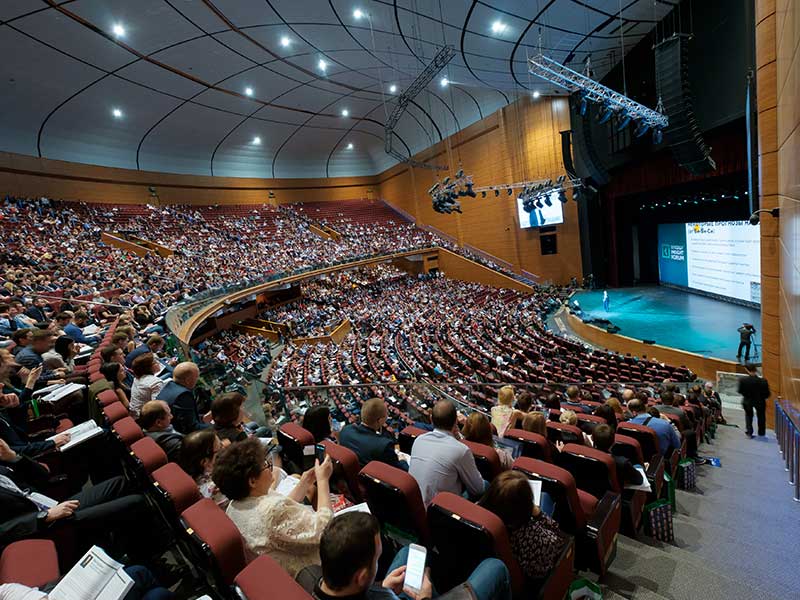
Staging An Event: What Is The Purpose?
Published
When embarking on the journey of organizing an event, one aspect that demands critical attention is “event staging”. This core component does more than merely offer a platform for presentations and performances. It communicates the ethos of the event, bridges the emotional connection with the audience, and crafts a memorable ambiance. Whether it is an academic symposium leveraging university apps or a professional conference utilizing enterprise event apps, the staging plays an indispensable role in delivering the desired impact.
Understanding the Essence of Event Staging
At its core, event staging is the physical and thematic environment in which an event takes place. It encompasses the stage’s design, lighting, sound systems, backdrop, and any other relevant components that contribute to the event’s ambiance and functionality. Staging sets the tone, influencing attendees’ perceptions and emotions. It is a pivotal touchpoint that can evoke feelings, ensure comfort, and, most importantly, enhance the conveyance of the event’s primary message.
A Deeper Dive into the Purposes of Staging
- Communication: The main stage serves as the epicenter of communication. It is where keynote speeches, presentations, and performances occur. A well-designed stage ensures clear lines of sight and sound, enabling seamless communication between the speakers and the audience.
- Aesthetic Appeal: The stage’s design can significantly enhance the aesthetic value of the event. By using themes, colors, and innovative designs, event organizers can create a captivating environment that resonates with the event’s purpose and the brand’s image.
- Safety and Functionality: A well-structured stage considers safety paramount. It ensures that all equipment, props, and structures are secured and poses no risk to the performers or the audience. Moreover, the functional design of the stage facilitates smooth transitions between segments, reducing downtime and maintaining audience engagement.
- Setting the Ambiance: Lighting, sound, and stage design play a crucial role in setting the desired ambiance. Whether aiming for a formal, casual, or festive atmosphere, the staging elements can be adjusted to reflect the desired mood and tone.
- Brand Visibility and Reinforcement: A stage is not just a platform for performance but also a canvas for branding. Strategic placement of logos, use of brand colors, and other thematic elements can bolster brand visibility. This not only reinforces the brand identity but also leaves a lasting impression, ensuring the brand remains top-of-mind for attendees long after the event concludes.
- Audience Interaction and Engagement: Modern staging often incorporates interactive elements to foster audience engagement. Elements such as LED screens displaying real-time social media interactions, stages with integrated technologies for audience polling, or platforms for augmented reality experiences can transform a passive audience into active participants, creating a two-way communication channel.
- Flexibility and Adaptability: In today’s diverse event landscape, stages need to cater to various formats – from panel discussions to theatrical performances or product launches. A well-designed stage is modular and adaptable, allowing for quick rearrangements or modifications to suit different segments of the event, ensuring optimal utilization and a seamless flow for the event’s duration.
- Elevating Performances and Presentations: An expertly crafted stage acts as a magnifying lens, focusing attention on the performers or presenters. With the right staging elements, even subtle performances or messages can be amplified, ensuring that the core content of the event stands out. This enhancement ensures that key takeaways are emphasized, fostering better recall and understanding among the audience.
Leveraging Technology in Event Staging
In today’s tech-savvy world, many events incorporate advanced technologies to elevate the staging experience. For instance, conferences might integrate conference apps, enabling attendees to interact with the stage through real-time polling or Q&A sessions. Meanwhile, academic events might weave in university apps, allowing attendees to access supplementary resources or engage in breakout sessions seamlessly. Integrating such technologies not only augments the attendee experience but also streamlines many logistical challenges associated with large-scale events.
The Crucial Role of Staging in Virtual Events
With the rise of virtual events, the concept of staging has evolved. While physical stages remain crucial for in-person events, virtual events leverage digital platforms for staging. Using platforms such as enterprise event apps, organizers can craft immersive digital stages, complete with interactive features, virtual breakout rooms, and digital backdrops. Such platforms have democratized event access, enabling attendees from across the globe to participate without geographical constraints.
The Transformative Power of Staging
Event staging, whether physical or digital, is much more than a backdrop for presentations. It is a dynamic element that breathes life into an event, influencing attendees’ perceptions, emotions, and overall experience. By meticulously designing and integrating the right technologies, event organizers can ensure that their staging not only serves its functional purpose but also leaves a lasting impression on every attendee. Whether you are hosting a global conference or a local seminar, remember that the stage is where stories unfold, ideas are shared, and memories are crafted.


